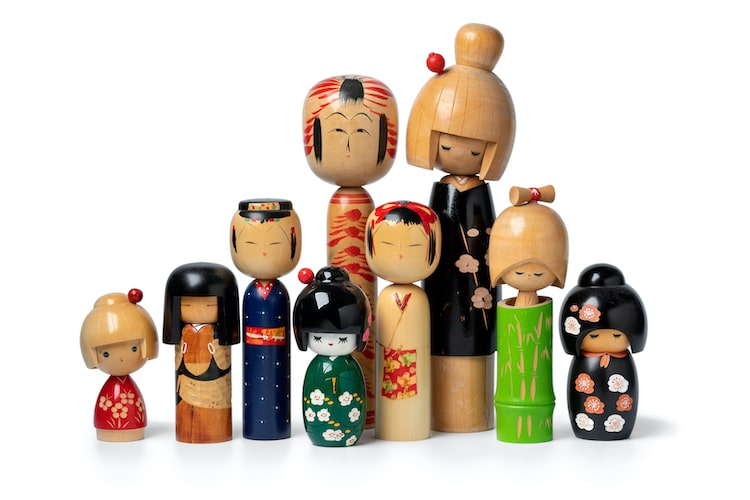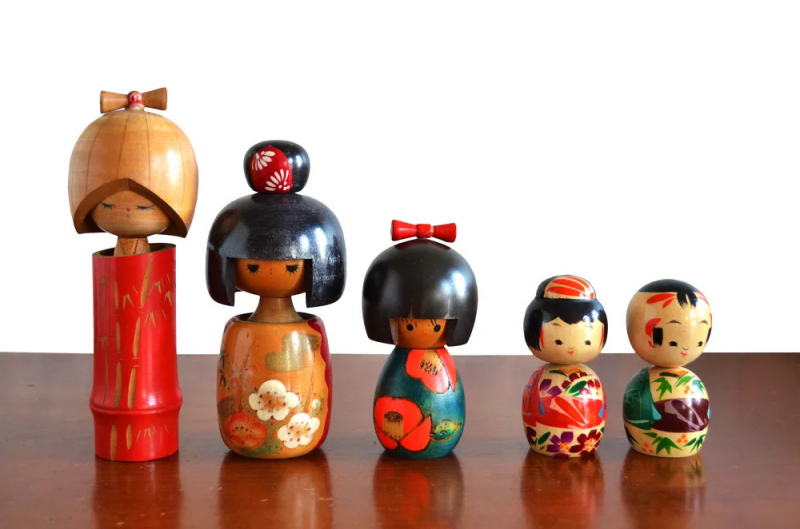Kokeshi Dolls
Kokeshi dolls are traditional wooden dolls that originate in Japan. They are known for their simplistic yet charming designs and have been popular for many years. The dolls are typically handcrafted from a single piece of wood and are characterized by their cylindrical body, rounded head, and absence of arms or legs.
Kokeshi dolls are often painted with vibrant colors and intricate patterns. The designs can vary greatly, with some dolls featuring floral motifs while others may have geometric or abstract patterns. The dolls' facial expressions are usually minimalistic, with simple lines and dots representing the eyes, nose, and mouth.
These dolls have a rich history and are deeply rooted in Japanese culture. They are believed to have originated in the Tohoku region of Japan in the early 19th century. Originally, kokeshi dolls were made by local craftsmen as toys for children. However, over time, they became cherished collectibles and souvenirs.
Each region in Japan has its own distinct style of kokeshi dolls, characterized by specific techniques and designs. The most well-known styles include the Naruko, Tsuchiyu, and Yamagata kokeshi. These dolls have different shapes, colors, and patterns, reflecting the unique traditions and craftsmanship of their respective regions.
In addition to their aesthetic appeal, kokeshi dolls also hold symbolic meaning. They are often given as gifts to express friendship, love, and well-wishes. Some people believe that kokeshi dolls bring good luck and serve as protectors against evil spirits. They are also regarded as a representation of the beauty and simplicity of rural life in Japan.














